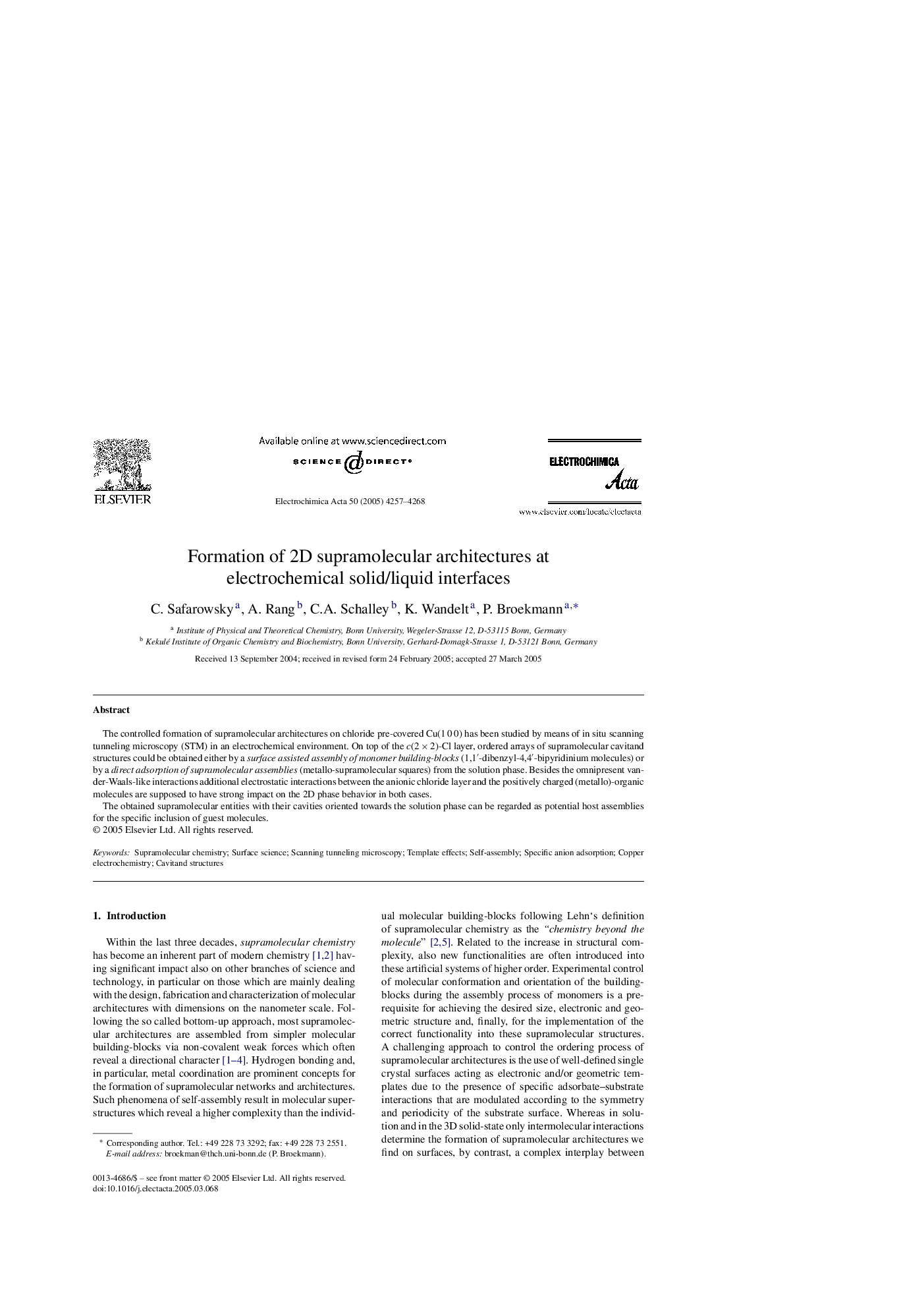| Article ID | Journal | Published Year | Pages | File Type |
|---|---|---|---|---|
| 196543 | Electrochimica Acta | 2005 | 12 Pages |
The controlled formation of supramolecular architectures on chloride pre-covered Cu(1 0 0) has been studied by means of in situ scanning tunneling microscopy (STM) in an electrochemical environment. On top of the c(2 × 2)-Cl layer, ordered arrays of supramolecular cavitand structures could be obtained either by a surface assisted assembly of monomer building-blocks (1,1′-dibenzyl-4,4′-bipyridinium molecules) or by a direct adsorption of supramolecular assemblies (metallo-supramolecular squares) from the solution phase. Besides the omnipresent van-der-Waals-like interactions additional electrostatic interactions between the anionic chloride layer and the positively charged (metallo)-organic molecules are supposed to have strong impact on the 2D phase behavior in both cases.The obtained supramolecular entities with their cavities oriented towards the solution phase can be regarded as potential host assemblies for the specific inclusion of guest molecules.
